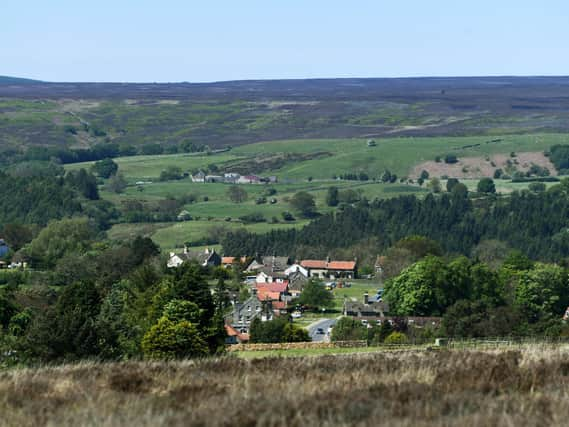RSPB bird crime report reveals North Yorkshire is the worst county in Britain for raptor persecution


The shocking statistics have revealed that the county has the highest number of raptor deaths in the UK over the past decade, with around 120 killed illegally between 2010 and 2019, 14 of which were found to have died in suspicious circumstances in 2019. Data for 2020 is not yet available, but there have been several more high-profile raptor killings this year that police are investigating.
There were also two deaths in the East Riding in 2019, a buzzard and a red kite.
Advertisement
Hide AdAdvertisement
Hide AdThe most commonly targeted protected species in Yorkshire was the buzzard (eight deaths in 2019), but the birds killed also included a rare marsh harrier, barn and tawny owls, and red kites, the latter a species which has recovered significantly in Yorkshire following a successful reintroduction programme at Harewood House. Sparrowhawks and kestrels were also victims of persecution.
The majority of birds were shot, but there was also once incidence of a trap being used on a tawny owl, and three poisonings.
The RSPB has been vocal about the strong links between raptor deaths and managed grouse shooting in the uplands. Birds of prey are eliminated because they take grouse for food, thus depleting the 'bags' available to paying clients.
There has been considerable conflict between conservationists and the shooting industry in areas such as the Yorkshire Dales and North York Moors, which are home to grouse moors.
Advertisement
Hide AdAdvertisement
Hide AdThis year North Yorkshire has been the focus of more media attention since the killing of a goshawk on Goathland Moor in the North York Moors National Park was filmed covertly. The land is owned by the Queen's Duchy of Lancaster estate, who lease out the shooting rights. A gamekeeper has since resigned over the incident and a police investigation is ongoing.
A satellite-tagged hen harrier went missing on a grouse moor in the Dales in September, and no trace of the bird or tag has since been found.
And earlier this summer a Natural England employee was monitoring hen harrier nesting sites on the Whernside estate, on the border between Yorkshire and Cumbria, when he spotted a man whom he believed was using a live eagle owl as a decoy to lure the birds to be shot. A criminal case was dropped when it was decided there was not enough evidence to proceed.
During lockdown in April, a Pateley Bridge family's dog died and their other pet became seriously ill after they ingested poisoned bait while on a walk in the moors above the town. Police tested the substance and identified it as a banned pesticide often used to target raptors, and an investigation is ongoing.
Advertisement
Hide AdAdvertisement
Hide AdIncreasing awareness of the issues surrounding raptor deaths in communities living near grouse moors even led to a retired couple from Hartoft in the North York Moors deciding to decorate one of their outbuildings with a mural making a statement against persecution.
North Yorkshire Police's head of rural crime, Inspector Matt Hagen, was unequivocal this autumn when he laid the blame for raptor deaths firmly at the door of shoots. He told Channel Four News: "All the shooting investigations that we’ve got going on at the moment are involving gamekeepers on grouse moors.”
RSPB investigations officer Mark Thomas also stated that he believed lockdown has been used by gamekeepers as a 'smokescreen' to prevent their crimes being witnessed or detected by the public, and cited examples of reports of suspicious bird deaths in North Yorkshire made during the spring.
"Lockdown was the perfect opportunity for the shooting community to show that they were sincere about their zero-tolerance approach to raptor persecution and take action against the criminal activity which was being clearly identified on a number of grouse moors. Instead, they responded by trying to discredit RSPB data.
"When four buzzards were found shot on Bransdale Moor in North Yorkshire, where was the outrage? The time has come for greater regulations to bring shooting estates in line with the law.”